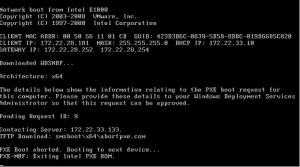How to Fix Computer Black Screen: Troubleshooting Methods and Solutions


How to Fix Computer Black Screen: Troubleshooting Methods and Solutions


Introduction
A black screen on your computer can be a frustrating and worrisome problem. Whether you are using a desktop or a laptop, encountering a black screen issue can interrupt your work or entertainment. The screen may go completely black, or you might see a blank screen with a cursor. In this comprehensive guide, we will explore various troubleshooting methods to help you fix the black screen problem on your computer. We’ll cover both hardware and software-related issues and provide step-by-step solutions to get your computer back up and running.
Common Causes of Black Screen Issues
Before we delve into the solutions, it’s essential to understand the potential causes of a black screen problem. Here are some common reasons why you might be experiencing this issue:
Hardware Issues: A faulty graphics card, loose or damaged cables, a malfunctioning display, or problems with the RAM can lead to a black screen.
Software Conflicts: Incompatible or outdated drivers, software bugs, or conflicts between programs can cause the screen to go black.
Operating System Problems: Corrupted system files or issues during the boot process can result in a black screen.
Power or Battery Problems: An insufficient power supply, a drained laptop battery, or a malfunctioning power adapter can lead to a black screen.
Now, let’s move on to the troubleshooting methods and solutions for each of these issues.
Troubleshooting Methods
1. Check the Power Source
Step-by-step tutorial:
For desktop computers, make sure all power cables, including the main power cable and the monitor cable, are securely plugged in.
For laptops, plug in the charger and ensure it is working correctly.
If you suspect a battery issue on a laptop, try removing the battery and connecting the charger directly to see if it resolves the problem.
2. Test the Monitor
Step-by-step tutorial:
If possible, connect your computer to a spare monitor or another computer’s monitor.
Check if the spare monitor displays correctly. If it does, the problem might be with your original monitor.
Verify the monitor’s brightness and contrast settings to ensure they are not causing the black screen.
3. Check Hardware Connections
Step-by-step tutorial:
For desktop computers, if you’re comfortable doing so, open the case and check the connections of the graphics card, RAM, and other components.
Reseat the graphics card and RAM modules firmly in their slots to ensure proper connection.
4. Boot into Safe Mode
Step-by-step tutorial:
On Windows, restart your computer and press the F8 key repeatedly before the Windows logo appears.
Select “Safe Mode” from the Advanced Boot Options menu to boot with minimal drivers and services.
Once in Safe Mode, you can perform various checks and fixes without interference from third-party software.
5. Update Graphics Drivers
Step-by-step tutorial:
Visit the website of your graphics card manufacturer (NVIDIA, AMD, or Intel).
Download the latest drivers for your specific graphics card model.
Install the drivers and restart your computer.
Consider using Display Driver Uninstaller (DDU) to completely remove existing graphics drivers before installing the new ones.
6. Roll Back Recent Changes
Step-by-step tutorial:
On Windows, press the Windows key + X and select “Device Manager.”
Expand the relevant category (e.g., Display Adapters) and right-click on your graphics card.
Select “Properties” and go to the “Driver” tab.
Click “Roll Back Driver” if the option is available.
If the rollback option is unavailable or doesn’t solve the issue, try restoring the system to a previous restore point.
7. Check for Malware
Step-by-step tutorial:
Run a full system scan using reliable antivirus software to detect and remove any potential malware threats.
Make sure your antivirus software is up to date for better detection.
Consider using a reputable anti-malware program to perform a secondary scan for any stubborn malware.
8. Perform a Startup Repair
Step-by-step tutorial:
On Windows, boot your computer using a Windows installation media.
Select “Repair your computer” and then choose “Startup Repair.”
Follow the on-screen instructions to complete the repair process.
If the startup repair doesn’t work, you can also try using the Command Prompt to fix the Master Boot Record (MBR) or Boot Configuration Data (BCD).
9. Check for Overheating
Step-by-step tutorial:
Overheating can cause the computer to shut down or display a black screen to prevent damage.
Ensure that all cooling fans inside the computer are functioning correctly.
Clean the dust and debris from the cooling vents and fans regularly.
Consider using temperature monitoring software to check for overheating issues.
Conclusion
Experiencing a black screen problem on your computer can be unsettling, but with the troubleshooting methods outlined in this guide, you can effectively identify and resolve the issue. Whether it’s a hardware problem, software conflict, or operating system issue, following these steps will help you get your computer back to normal operation. Remember to back up your important data regularly to avoid data loss during troubleshooting.
Important Tips
Regularly update your operating system and drivers to ensure compatibility and stability.
Create a system restore point before installing new software or making significant changes to your computer.
Keep your computer and its components clean from dust and debris to prevent overheating.
Use a reliable antivirus program and keep it up to date to protect against malware threats.
If you’re uncomfortable working with hardware, seek professional help for internal checks and repairs.
Consider using specialized software for driver updates and system maintenance to automate the process.
Check for any pending Windows updates and install them to fix known bugs and issues.
Remove unnecessary startup programs to reduce the chances of software conflicts during boot-up.
Regularly backup your important files and data to an external storage device or cloud storage to prevent data loss in case of a severe hardware or software failure.








